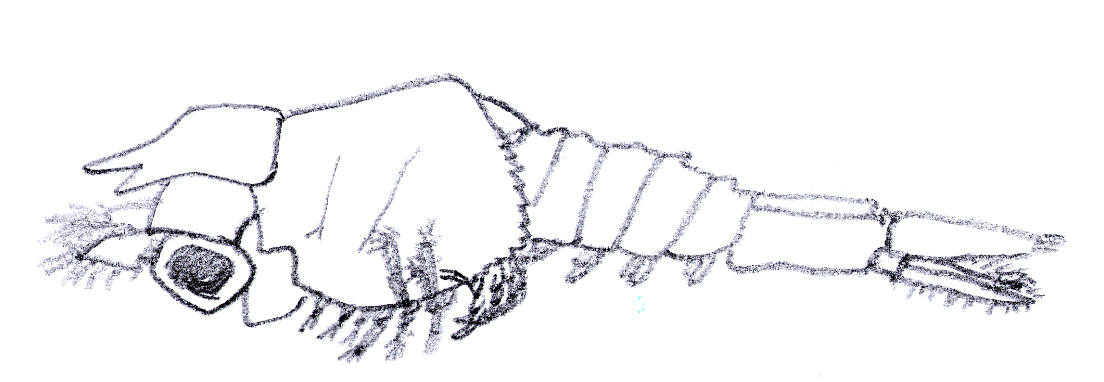
Eggs
Like most of the tropical crabs, Stimdromia lateralis breeds discontinuously throughout they ear but eggs may also hatch coinciding with full or new moon, showing a lunar rhythm (Ross, 1983).
Females usually give birth to a very large number of eggs, and it varies with the size of the crab. Well-developed eggs can be double the size of newly-laid eggs as the eggs swell up during development (Williamson, 1982).
Colours of the eggs also change from brown to grey during development as the yolk reserve is depleted. Outline of the embryo becomes visible just before they are ready to hatch, with the eyes and pigments spot appearing first, and then followed the outlining of the abdomen and cephalothorax (Williamson, 1982).
Larvae are released from the underside of the females’ abdomen when the eggs hatch (Warner, 1977).
Larval Stage
Like most crustacans, the sponge crab pends most of its larval life as plankton. This may lasts from one to several months depending on the nutrients at which the larvae are able to obtain. Larva moults during this time until it is settled on the seabed and reaches its first crab stage.
There are in general 2 forms of larval stage, the zoea (3-6) stages and then followed by one megalopa stage (Williamson, 1982).
First zoea are shrimp-liked tiny animals as shown below.
Note:
- the full complement of functional head appendages, but only the 1st & 2nd maxillipeds are developed and functional.
- the rest of the appendages are absent or only present as limb buds.
- all appendages function the same as they do in adult stage with the exception of the maxillipeds ( which are used for locomotion).
Zoea grows and develops at each moult, and setae are added to existing appendages. Appendages are also added to the posterior part of the body. In the forth zoea, other appendages start to developed from limb and pleopod buds (see diagram below), however, these appendages remain non-functional until the zoea moults into megalopa larvae (Williamson, 1982).

4th zoea larva of Dromiidae
The megalopa stage is more similar to the adult form morphologically than the zoeae do. The armature of carapace is greatly reduced, and the presence of a complete set of functional appendages (including chelipeds and pereiopods) (Williamson, 1982).
Once the megalopa larva is settled onto the seabed, it starts to moult into juvenile crab, and continues moulting and development the benthic waters until it reaches adult stage and has the ability to begin reproducing.
|